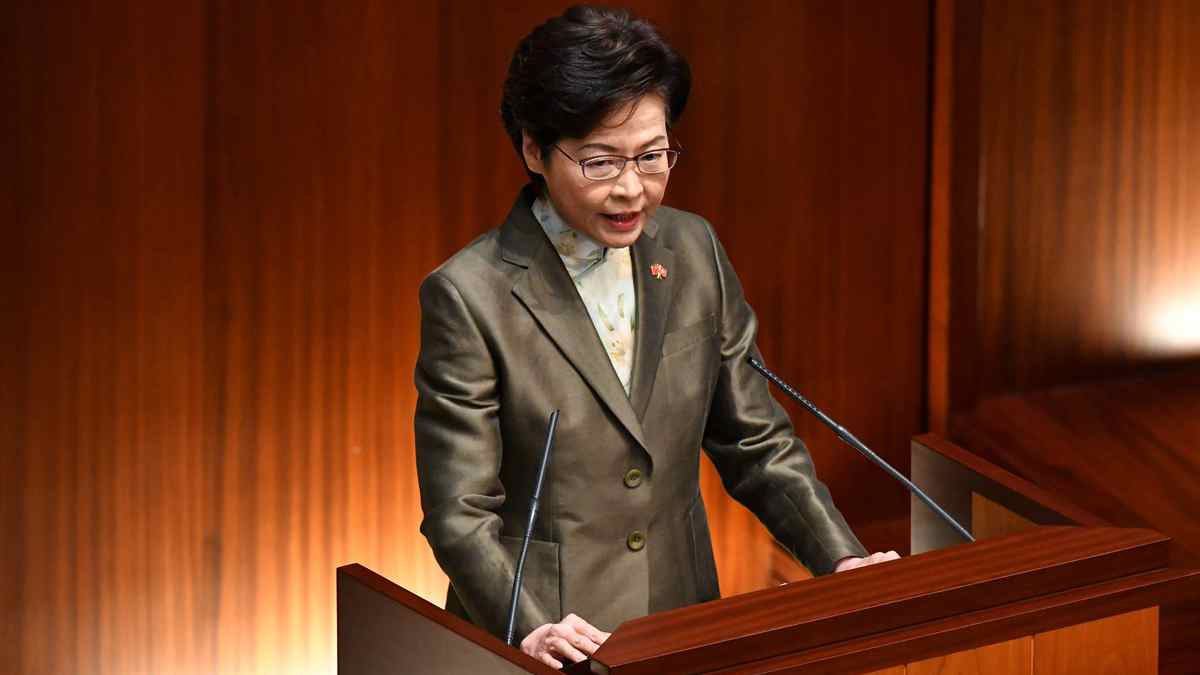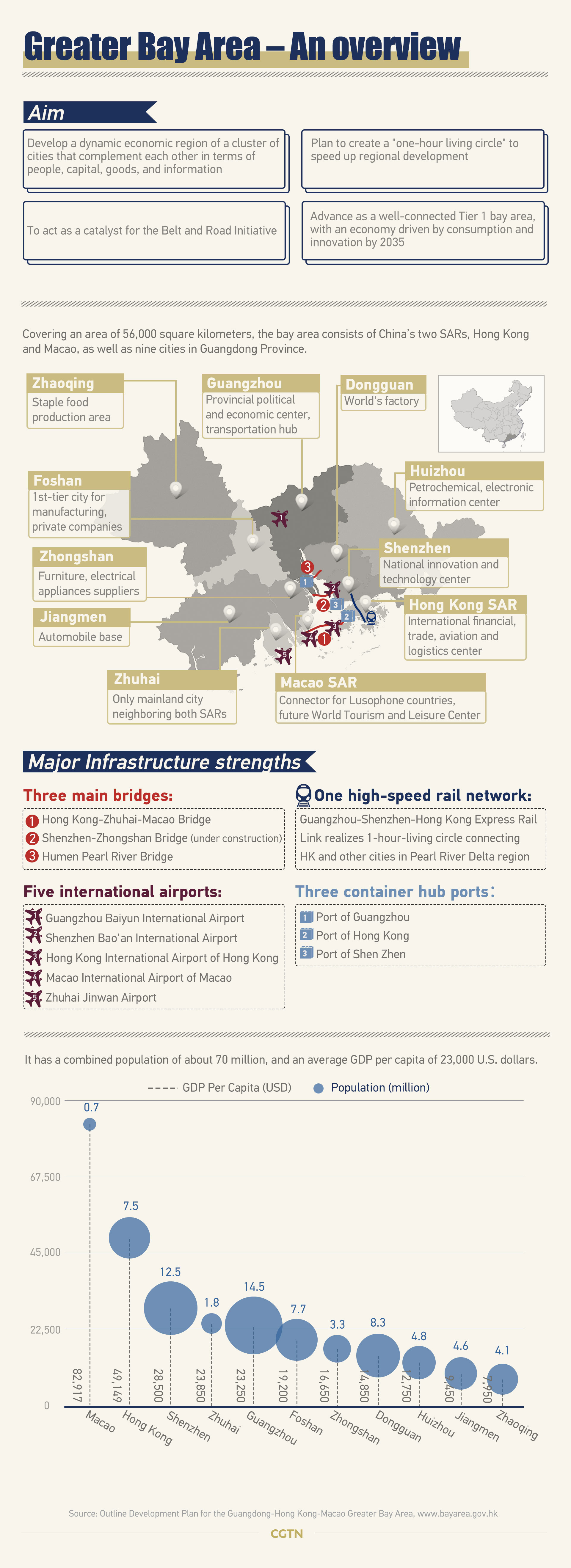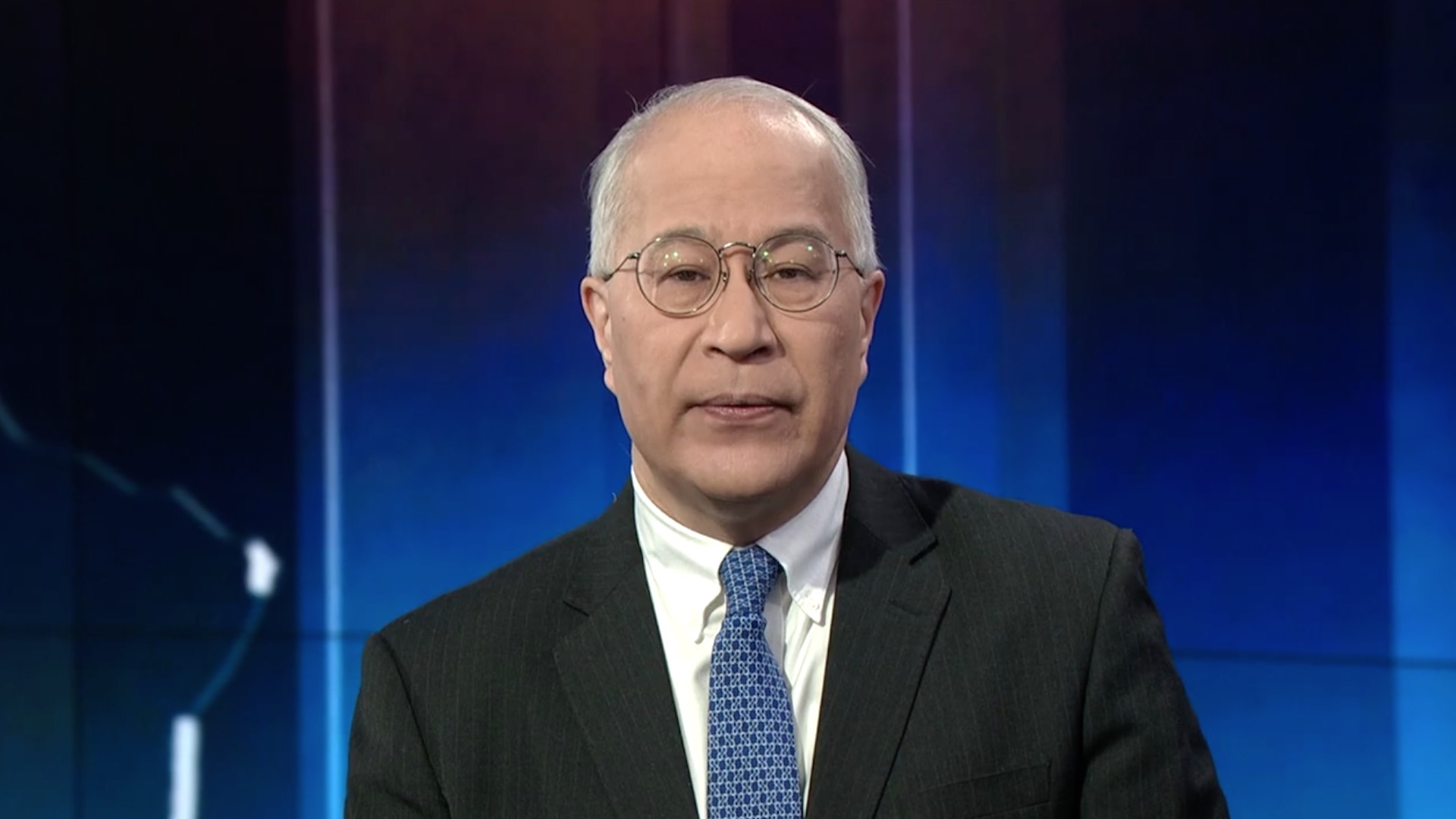Carrie Lam on Wednesday unveiled her fourth policy blueprint to the Hong Kong Special Administrative Region (HKSAR) legislature, stressing that her government's urgent priority is to help the city out of its current impasse and restore people's confidence.
"The Policy Address that I deliver today seeks to restore Hong Kong's constitutional order, consolidate and enhance Hong Kong's strengths and diversify its economic development, and build on our past efforts to continue to improve people's well-being, with a view to resolving our immediate and long-term social problems," the chief executive said.
Lam added that she felt the weight of responsibility when preparing this year's Policy Address as the HKSAR has experienced multiple unprecedented challenges: from social unrest and a shrinking economy to the COVID-19 epidemic and endangered national security.
She wrapped up her speech by saying "relaunching" Hong Kong and "rebuilding" people's trust in the government next year were her principal aims.
01:31

1. No protests in the LegCo
There was no repeat of last year's chaotic scenes – when the policy address was disrupted by opposition lawmakers – in the Legislative Council (LegCo) chamber during Lam's 135-minute speech on Wednesday.
Hong Kong's opposition lawmakers had earlier announced a "resignation en masse" in protest at the SAR government's move to disqualify four opposition lawmakers, according to a decision by the Standing Committee of the National People's Congress, China's top legislature.
The attending lawmakers wore masks and quietly took notes in the chamber as Lam spoke.

The seats of opposition lawmakers are empty as Carrie Lam delivers her speech at LegCo, November 25, 2020. /AP
The seats of opposition lawmakers are empty as Carrie Lam delivers her speech at LegCo, November 25, 2020. /AP
2. Seize mainland opportunities
Lam said the address, originally slated for October 14, was delayed to find more policy concessions from the Chinese mainland.
She said Hong Kong should capitalize on its proximity to the Chinese mainland, where the economy has recovered strongly from the pandemic, adding that the city can benefit by engaging in China's new development pattern of "dual circulation."
The chief executive also recalled her early November trips to Beijing, Guangzhou, and Shenzhen, highlighting the positive results achieved.
On promoting the development of the Greater Bay Area (GBA), Lam said more measures were on the way, including permitting the use of Hong Kong-registered drugs and common medical devices in designated Hong Kong-owned healthcare institutions across the GBA, relaxing the limitation on exporting Chinese mainland human genetic resources to Hong Kong for research purposes, facilitating Hong Kong private cars travelling to Guangdong via the Hong Kong-Zhuhai-Macao Bridge, and expediting the implementation of the cross-boundary wealth management connect scheme.
Read more:
Hong Kong plays core role in the Greater Bay Area
Why 14th Five-Year plan matters for Hong Kong?
Hong Kong should view the GBA development as an entry point, proactively become a "participant" in domestic circulation and a "facilitator" in international circulation, she added.

3. A 'gaping hole' in national security
Lam stated that Hong Kong become an obvious gaping hole in national security and presented significant risks to the country.
Since China adopted the law on safeguarding national security in Hong Kong on June 30, peace has been restored, she said, adding that the HKSAR will boost national security education and propose a bill to amend the city's oath-taking and LegCo ordinances.
Einar Tangen, CGTN's current affairs commentator, said the words indicated Lam would continue to use a firm hand with those who undermine the "One Country" principle.
00:49

4. Getting to 'zero infections'
Hong Kong is now facing a resurgence of the coronavirus, with 80 new cases confirmed on Tuesday, bringing the total tally to nearly 5,800.
"The year 2020 has presented mankind with an unprecedented public health crisis," Lam said.
The chief executive vowed to spare no efforts in achieving "zero infections," adding that the government has been maintaining a high degree of transparency in its anti-epidemic efforts. She says her administration extends heartfelt gratitude to each and every individual who has joined the fight against COVID-19.
Lam also said Hong Kong will boost cooperation with the Chinese mainland on containing COVID-19 and vaccine development.
"I can assure that every decision we made is based on science, expert advice and the information available to us at the time, and that political considerations have never come into play," she added.
Read more:Graphics: Why is universal COVID-19 testing good for Hong Kong?

Pedestrians wearing face masks walk on a road in Hong Kong, south China, Nov. 24, 2020. /Xinhua
Pedestrians wearing face masks walk on a road in Hong Kong, south China, Nov. 24, 2020. /Xinhua
5. Accelerate housing supply
Lam also addressed the shortage of land and limited housing supply, which have long been problems in the city.
Of Hong Kong's total 1,100 square kilometers of land area, only 24.3 percent has been developed, with land for residential use accounting for a mere 6.9 percent, according to data from the HKSAR government.
Lam said the Hong Kong government will continue with plans for more land reclamation off Lantau Island. She will also head an internal steering group for land development.
The government has identified housing sites with a total area of about 90 hectares along the Northern Link, where over 70,000 housing units can be built, the chief executive said.
00:44

Tangen said that while the government is trying to organize its own assets, that's not the real issue. He suggested the current situation, whereby the majority of land in Hong Kong is owned by the "Five Big Families," should be changed to solve the land shortage issue.

